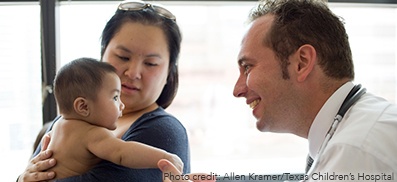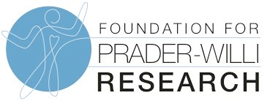
Schaaf-Yang Syndrome (SYS) is a rare genetic condition that shares some clinical features with PWS. SYS is caused by the disruption of the MAGEL2 gene on chromosome 15, which is also missing in people with PWS. People with each of the syndromes experience issues with feeding in infancy (hypertonia), developmental delay and disability, and sleep apnea. Because of these connections, the Foundation for Prader-Willi Syndrome Research funds studies associated with SYS that may also help those with PWS.
Dr. Christian Schaaf is an assistant professor of molecular and human genetics at Baylor College of Medicine in Houston and an expert on SYS. Schaaf will be speaking at the Foundation for Prader-Willi Research Conference in Indianapolis August 25-27 and, in conjuction with that conference, will lead the first SYS family conference. Here he shares some of his expertise on the relationship between the two conditions.
How were you involved with identifying SYS?
I was the first author of the initial report of patients with this new genetic condition in 2013, and OMIM — Online Mendelian Inheritance in Men, an organization in charge of naming new genetic syndromes — decided to name the syndrome after Dr. Yaping Yang and myself in 2015.
What are the genetic similarities between PWS and SYS?
PWS is caused by the absence of paternally expressed genes on chromosome 15q. One of those genes is the MAGEL2 gene. Point mutations in MAGEL2 cause SYS. In other words, PWS is caused by a lack of chromosome material that is coming from the father. SYS is caused by alterations of the genetic code within a specific gene that lies within that chromosome piece.
What clinical features do patients with PWS and SYS share?
Both patients with PWS and patients with SYS manifest low muscle tone at birth, as well as feeding difficulties. Patients with both conditions will go on to have developmental delay and, in most cases, intellectual disability. Other shared features include endocrine abnormalities, abnormal development of the sexual organs and sleep apnea.
How is SYS unique?
SYS is unique because of its genetic mechanism and cause. Clinically, it is distinct as patients with SYS typically manifest joint contractures. The prevalence of autism spectrum disorder is much higher among individuals with SYS than those with PWS. And one of the hallmarks of PWS, the hyperphagia — or overeating — and morbid obesity, if left untreated, is not seen in the majority of SYS patients.
What can the PWS community learn from SYS research?
The discovery of SYS has shown and told us that the MAGEL2 gene is one of the most critical genes within the PWS chromosome domain. It suggests that if we could increase the expression or function of MAGEL2, we may be able to rescue many of the PWS phenotypes.
In addition, for babies and children with clinical features of PWS, but negative molecular testing, our findings suggest that they should undergo MAGEL2 gene sequencing, as they may have SYS.
What are some of the most exciting areas of research, treatments, and therapies for PWS or SYS?
The basic science studies of the past years are really beginning to pay off, and there are more and more clinical trials available now for subsets of symptoms of PWS. We are slowly entering an era of “molecular medicine.” The holy grail, however, would be the “unsilencing” of critical genes within the PWS domain from the imprinted maternal chromosome. I strongly believe that treatments are within reach, and that we will see a dramatic increase in quality of life of affected individuals within the next two decades.








